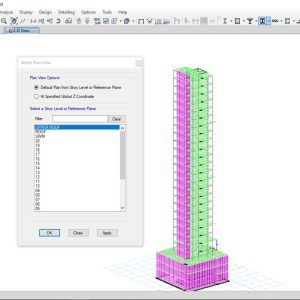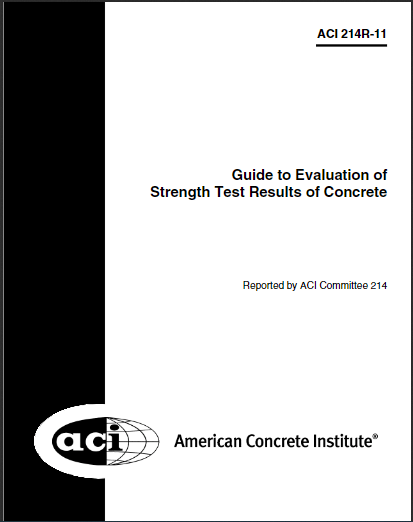Description
-
 MS Office Professional Essential Training$200.00
MS Office Professional Essential Training$200.00 -
 Primavera P6 Professional Training Course$250.00
Primavera P6 Professional Training Course$250.00 -
Product on sale
 20+ Story High Rise BuildingOriginal price was: $39.99.$9.99Current price is: $9.99.
20+ Story High Rise BuildingOriginal price was: $39.99.$9.99Current price is: $9.99. -
 CSI SAFE Essential Training Course$250.00
CSI SAFE Essential Training Course$250.00 -
 CSI ETABS Essential Training Course$350.00
CSI ETABS Essential Training Course$350.00
This guide provides an introduction to the evaluation ofconcrete strength test results. Procedures described areapplicable to the compressive strength test results requiredby ACI 301, ACI 318, and similar specifications and codes.Statistical concepts described are applicable for the analysisof other common concrete test results, including flexuralstrength, slump, air content, density, modulus of elasticity,and other tests used for evaluating concrete and ingredientmaterials.
This guide assumes that the concrete test resultsconform to a normal distribution.Most construction projects in the United States andCanada require routine sampling of concrete and fabricationof standard molded cylinders. These cylinders are usuallycast from a concrete sample taken from the discharge of atruck or a batch of concrete.
They are molded and curedfollowing the standard procedures of ASTM C31/C31M andtested as required by ASTM C39/C39M. If the concrete is soprepared, cured, and tested, the results are the compressivestrength of the concrete cured under controlled conditions,not the in-place strength of the concrete within the structure.
It is expected that, given the uniformity of the curing conditions, these cylinders would have essentially the same strength, thereby indicating concrete with consistent properties. It is these cylinders that are used for acceptance purposes. Inevitably, strength test results vary. Variations in the measured strength of concrete originate from two sources:•Batch-to-batch variations can result from changes to the ingredients or proportions of ingredients, water-cementitious material ratio (w/cm), mixing, transporting, placing ,sampling of the batch, consolidating, and curing; and Within-batch variations, also called within-test variations,
-
 Turnitin Instructor with AI Detection$70.00 – $130.00
Turnitin Instructor with AI Detection$70.00 – $130.00 -
 SmartPLS 4.1 Processional | Lifetime activation key$60.00
SmartPLS 4.1 Processional | Lifetime activation key$60.00 -
 EndNote Lifetime for Windows /Mac Software Full Version$8.00 – $15.00
EndNote Lifetime for Windows /Mac Software Full Version$8.00 – $15.00 -
![Guide to Evaluation of Strength Test Results of Concrete 11 IBM SPSS Statistics v30 | v29 [Lifetime Activation with key]](https://civilmdc.com/wp-content/uploads/2022/03/IBM-SPSS-30-Key-300x300.jpg) IBM SPSS Statistics v30 | v29 [Lifetime Activation with key]$15.00 – $45.00
IBM SPSS Statistics v30 | v29 [Lifetime Activation with key]$15.00 – $45.00 -
 LinkedIn ALL COURSES LIFETIME Warranty$25.00
LinkedIn ALL COURSES LIFETIME Warranty$25.00 -
Product on sale
 REF-N-WRITE | Premium Account Lifetime ActivationOriginal price was: $45.00.$22.00Current price is: $22.00.
REF-N-WRITE | Premium Account Lifetime ActivationOriginal price was: $45.00.$22.00Current price is: $22.00. -
 QuillBot’s paraphrasing tool | Premium Account 6 month | + WARRANTY$12.00
QuillBot’s paraphrasing tool | Premium Account 6 month | + WARRANTY$12.00 -
 Grammarly Premium Account 6 Month |12 month$20.00 – $35.00
Grammarly Premium Account 6 Month |12 month$20.00 – $35.00 -
 TURNIT1N Student (Plagiarism Checker) – 6 Month | 1 Year | 2 Years | 3 Years | 4 Years | LifeTime$15.00 – $200.00
TURNIT1N Student (Plagiarism Checker) – 6 Month | 1 Year | 2 Years | 3 Years | 4 Years | LifeTime$15.00 – $200.00


